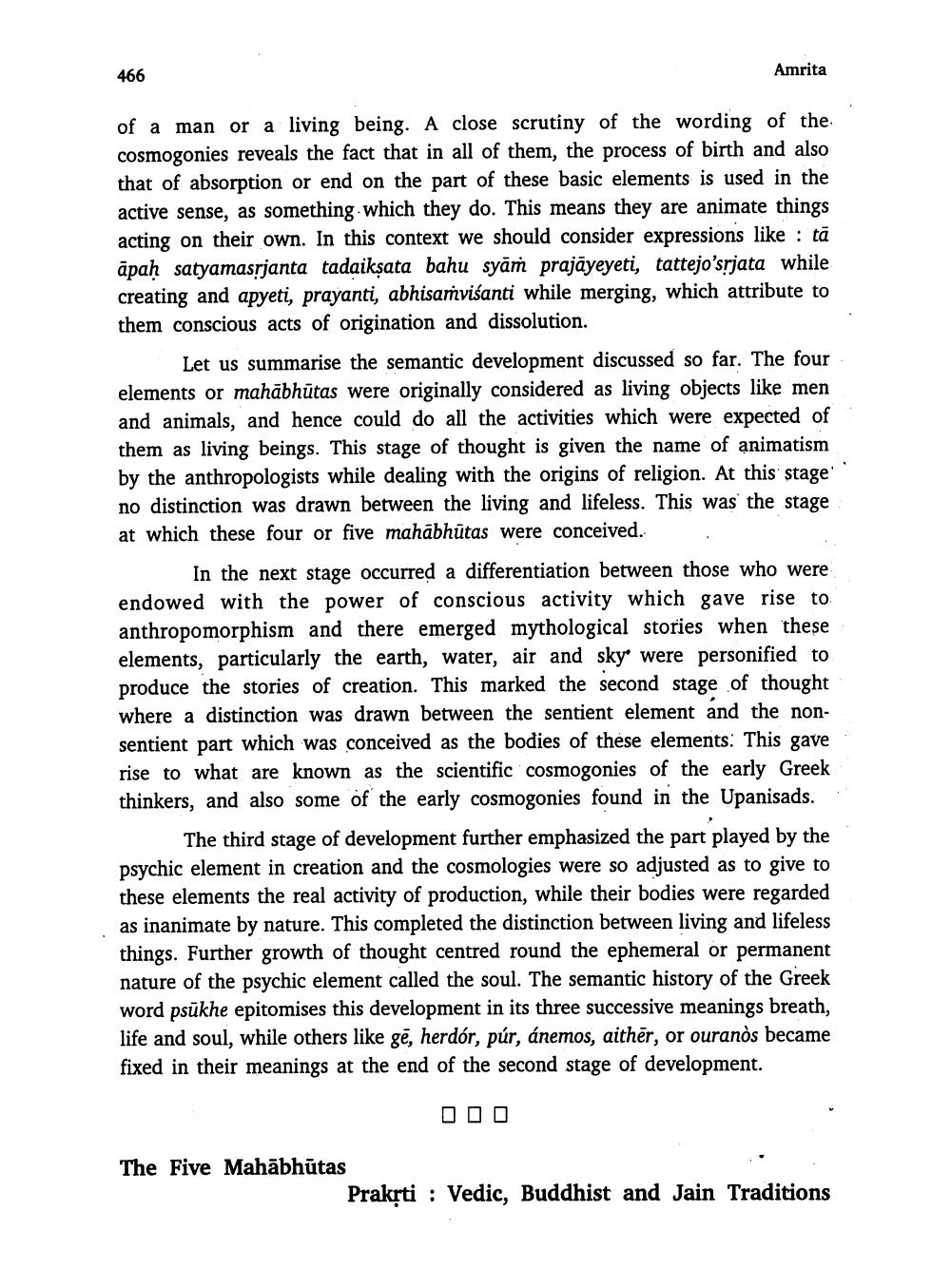________________
466
Amrita
of a man or a living being. A close scrutiny of the wording of the cosmogonies reveals the fact that in all of them, the process of birth and also that of absorption or end on the part of these basic elements is used in the active sense, as something which they do. This means they are animate things acting on their own. In this context we should consider expressions like: tā apaḥ satyamasṛjanta tadaikṣata bahu syāṁ prajayeyeti, tattejo'sṛjata while. creating and apyeti, prayanti, abhisamviśanti while merging, which attribute to them conscious acts of origination and dissolution.
Let us summarise the semantic development discussed so far. The four elements or mahābhütas were originally considered as living objects like men and animals, and hence could do all the activities which were expected of them as living beings. This stage of thought is given the name of animatism. by the anthropologists while dealing with the origins of religion. At this stage' no distinction was drawn between the living and lifeless. This was the stage at which these four or five mahābhütas were conceived.
In the next stage occurred a differentiation between those who were endowed with the power of conscious activity which gave rise to anthropomorphism and there emerged mythological stories when these elements, particularly the earth, water, air and sky were personified to produce the stories of creation. This marked the second stage of thought where a distinction was drawn between the sentient element and the nonsentient part which was conceived as the bodies of these elements. This gave rise to what are known as the scientific cosmogonies of the early Greek thinkers, and also some of the early cosmogonies found in the Upanisads.
The third stage of development further emphasized the part played by the psychic element in creation and the cosmologies were so adjusted as to give to these elements the real activity of production, while their bodies were regarded as inanimate by nature. This completed the distinction between living and lifeless things. Further growth of thought centred round the ephemeral or permanent nature of the psychic element called the soul. The semantic history of the Greek word psukhe epitomises this development in its three successive meanings breath, life and soul, while others like ge, herdór, púr, ánemos, aither, or ouranòs became fixed in their meanings at the end of the second stage of development.
000
The Five Mahābhūtas
Prakrti Vedic, Buddhist and Jain Traditions




